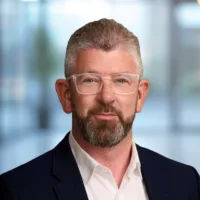4 min read
Despite growing consensus around the need for climate action, the public conversation around net zero still feels stuck in first gear. Leaders talk about targets. Scientists talk in acronyms. Activists talk about catastrophe. Meanwhile, the public – especially in a time of economic strain – often tunes out completely.
The problem isn’t the science. It’s how we talk about it.
Net zero, as a concept, has been reduced to technocratic abstraction. The terms used most often – “Carbon offsets”, “Scope 3 emissions, “just transition frameworks” – and distant decarbonisation timelines may mean a great deal to policymakers. But for many people, including business decision-makers, they sound like white noise.
We’ve made climate communication too elite, too abstract, and too earnest. It’s costing us real momentum. We haven’t progressed much since the views expressed by Climate Outreach in its landmark 2020 study: “Climate change language has too often been technical, remote and unrelatable… We need messages that move people emotionally, not just inform them intellectually.”
When language undermines action
Words matter. And in climate communication, some words do real damage.
Take the increasingly common phrase: “hard to abate”. Originally coined to describe sectors like steel, cement or shipping with complex decarbonisation challenges, the phrase now often functions as a kind of get-out clause – subtly implying that progress in these industries is optional, too expensive, or someone else’s problem.
It may seem harmless. But language shapes mindset. And when we start pre-labelling entire sectors as “too difficult,” we reduce pressure, lower ambition, and let innovation stall. Worse, we risk embedding the idea that some emissions are just inevitable – rather than solvable with creativity, investment, and a sense of urgency.
How we’re talking but not connecting
Let’s take a look at the patterns in climate and net zero messaging that consistently fail to resonate:
1. Jargon overload
Terms like “decarbonisation pathways” and “climate resilience” may be accurate, but they’re rarely meaningful to most audiences. The word “retrofit,” for instance, hides a world of opportunity: warmer homes, lower bills, and better health. But few would know that from the language we use.
Studies by Ipsos and Yale University show that terms like “climate crisis” and “net zero” resonate very differently across audiences. For some, they trigger action. For others, they evoke confusion, suspicion, or alienation – especially when paired with complex technical language.
In one 2023 McKinsey survey of energy sector stakeholders, 68% admitted that climate communications in their organisation were “not clearly understood by non-experts”, including many internal teams.
This disconnect is not about intelligence or education. It’s about relevance. If we remember that the public see issues differently from policymakers, it will ensure that we speak the language of our audience and prioritise what matters to them. If we’re talking about 1.5°C to someone worried about heating their home, then we are in real danger of losing the argument.
2. Doom and guilt
Messages focused on rising sea levels, temperature tipping points, and irreversible collapse tend to backfire. When people feel fear without any sense of power, they disengage.
Research shows that emphasising catastrophic futures is less effective than showing achievable action. We need to shift from “we’re all doomed” to “here’s what we can do and why it’s worth it.”
3. Distant targets, invisible benefits
“Net zero by 2050” means little to a family struggling with energy bills. Long-term ambition is vital, but it must be accompanied by short-term wins – cleaner air, warmer homes, lower bills, better jobs. If the benefits are invisible or decades away, motivation disappears.
4. Moralising and polarisation
Too often, climate messages feel like a lecture – assuming a “right” way to think and act. This alienates people who don’t share the same political or cultural assumptions. Instead of building coalitions, it draws tribal lines.
Leaders need to reframe net zero as a shared mission – one rooted in protecting health, homes, jobs, and futures rather than just saving polar bears or winning culture wars.
How to talk about net zero and make people care
If we want real change, we need a different kind of conversation. One grounded in practical relevance, emotional resonance, and storytelling.
There are several ways to do that.
1. Make it local and personal
People respond to what they can see and feel. Rather than saying “temperatures are rising,” say “your street flooded twice this year.” Instead of “reducing emissions by 2030,” say “cutting pollution now means cheaper energy and cleaner air next winter.”
2. Speak their language
Avoid technical labels like “greenhouse gases” or “net zero pathways.” Use human language: pollution, overheating, extreme weather, unaffordable bills. Explain why it matters, in ways that reflect people’s lives.
3. Focus on co-benefits
Energy transition isn’t just about reducing emissions. It’s about economic opportunity, energy security, and improved quality of life. Whether it’s lower bills from insulation or new jobs in clean tech, these benefits must be front and centre.
Instilling feelings of doom and shame doesn’t change behaviour. It is much more likely to cause paralysis.
Research from Harvard Kennedy School confirms that climate messages framed around benefits (cleaner air, lower bills, energy security) outperform those focused on sacrifice or fear.
4. Tell real stories
Statistics rarely shift opinions, but well-told stories do. That means profiling a local business that is cutting costs through renewables or sharing how a community project helped insulate homes. People will be more engaged if they hear about the wind farm that powers their local hospital; the steel plant trialling low-carbon fuels; or the farmer getting paid for regenerative practices. Give people characters and narratives that they can relate to – not just charts.
5. Choose credible messengers
Not everyone listens to politicians. But many trust doctors, farmers, engineers, or neighbours. Research shows that trusted, local voices have far more power to influence than elite experts. It makes sense to make better use of them.
Breaking through the language barrier
We often treat communication as the last step in a sustainability strategy – the output after the thinking is done – but it should be the starting point.
Messaging is a powerful catalyst. It can shape public will, influence funding flows, determine regulation, and guide corporate strategy. Poor messaging fuels scepticism and delay. Good messaging builds coalitions, unlocks ambition, and makes transition feel possible.
As the Young Foundation recently noted:
“Language is one of the biggest levers we have to bring people into the net zero journey… but right now, it's making many feel excluded.”
We are in a critical phase for energy transition with increases in investment and real momentum in innovation. But public and political support can still waver, especially if people don’t see the upside. If we fix the way we talk about climate action, we increase the chance of achieving it.
Conclusion
Climate action will not succeed solely as a result of scientific research, policy innovations, or technological advances. It will also depend to a great extent on how we tell the story.
That means dropping the jargon, ditching the doom, and speaking directly to what people care about: jobs, health, family, security, and cost of living. It means putting local voices at the centre, showing real progress, and painting a picture of shared opportunity instead of shared guilt.
In an era of low trust and high scepticism, the best climate leaders won’t just be the best strategists or engineers. They’ll be the best communicators.




